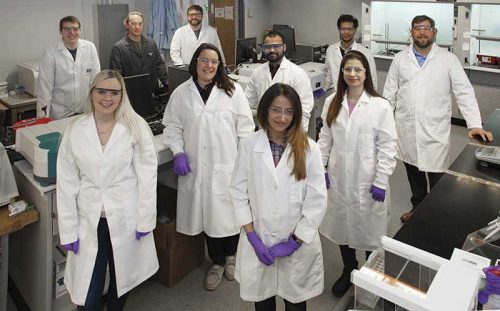Supported by: The National Science Foundation

Engineering Professor Geoffrey Bothun and his research team of undergraduate students, graduate students and postdoctoral fellow. Photo credit: Beau Jones.
A critical natural component of oceans and a point of initial exposure to plastic pollution are sea surface microlayers, which are ubiquitous globally and are comprised of natural molecules, particulate matter, and microorganisms. These microlayers act as an “ocean skin” that influences the exchange of mass and heat between the seawater and the atmosphere. They are also a site of micro- and nanoplastic accumulation. This project will study how micro- and nanoplastics interact with model sea surface microlayers, how these interactions cause them to accumulate and transform at the sea surface, and to what extent micro- and nanoplastics will alter the properties of sea surface microlayers. The goal is to provide fundamental insight into interfacial and colloidal properties leading to micro- and nanoplastic accumulation that can contribute broadly to determining environmental risks of plastic pollution and to devising strategies for remediation.
Additional Information:
Bionanotechnology Laboratories (Bothun Laboratory)
National Science Foundation page for award

